Providing 885 new homes and community services, the Barton Park development is an extension to Barton, a neighbourhood of around 1,500 homes three miles from Oxford city centre. An important goal for Barton Park, one of the NHS Healthy New Towns demonstrator sites, was to integrate the new and existing communities through the provision of shared social infrastructure and amenities. The population of the Barton and nearby Sandhills wards faces significant health inequalities resulting from high deprivation. The project aims to provide equal opportunities to all Barton residents to achieve good physical and mental health outcomes.
This project is featured as one of our healthy urban development case studies and this case is adapted from the full version in Healthy Urbanism.(1)
| Location | Oxford, England, UK |
| Project type: | Mixed use |
| Project size: | 885 new homes; 2,500 square meters of retail; a 3,000 square meters community hub; 12.29 ha of public open space |
| Goals: | Building partnerships and governance structures to deliver a healthier built environment, enable strong communities and create new ways of providing integrated health and care systems. |
| Date started: | 2012 |
| Date completed: | Ongoing |
| Project cost: | £50 million excluding land costs (£15 million for section 106, £35 million for infrastructure) |
| Stakeholders: | Oxford City Council (Landowner), Grosvenor Group (Developer), Barton Oxford LLP (Joint venture of Oxford City Council and Grosvenor) |
| Website: | https://www.bartonparkoxford.com/ |
Health and wellbeing
Reducing health inequalities is a core objective for Barton Park. The community of Barton, adjacent to the Barton Park development, is in the 20% most deprived areas in England. To help existing communities and new residents to lead healthier lives, the project team have created partnerships with two GP surgeries and other service providers to create community-based wellbeing activities and support teams for high users of services (2), partly through expansion of an existing social prescribing service.
A Section 106 agreement was used to obtain funds for improvements to local infrastructure. This included significant refurbishments to the Barton Neighbourhood Centre, expansion of the GP surgery and installation of a lending library and reading room. Other activities are run by the Barton Community Association, such as a Community Larder which runs weekly at the Centre offering residents affordable food and social interaction.

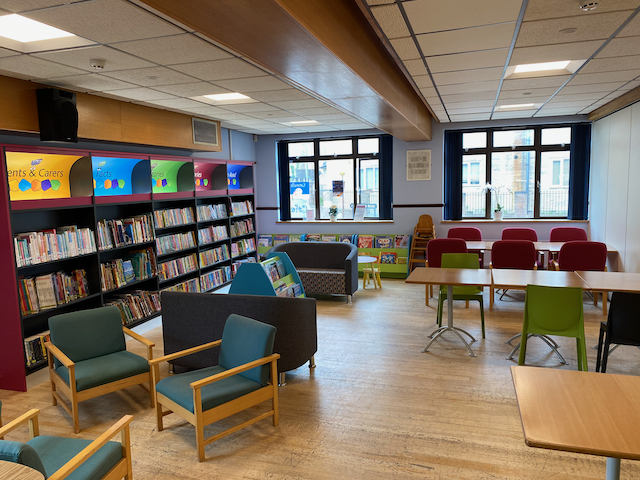

A key success of Barton Park is the unusual appointment of a Community Health Development Officer, Iona O’Carroll, working for three years to support health equity and build the Barton Healthy New Town legacy. O’Carroll has facilitated the development of new services and opportunities to integrate Barton and the new development. She also works for Barton Art in Nature ‘whose aim is to immerse the local community in Art and Nature through creating a program and platform of outdoor art and growing activities and events that are powered by and for the community, providing real reasons for us all to meet, share and connect, outdoors and in nature’.(3) With funding from the developer, Barton Art in Nature has installed a mural wall, natural sculptures and a wellbeing garden that is used as part of the social prescribing programme (images below).
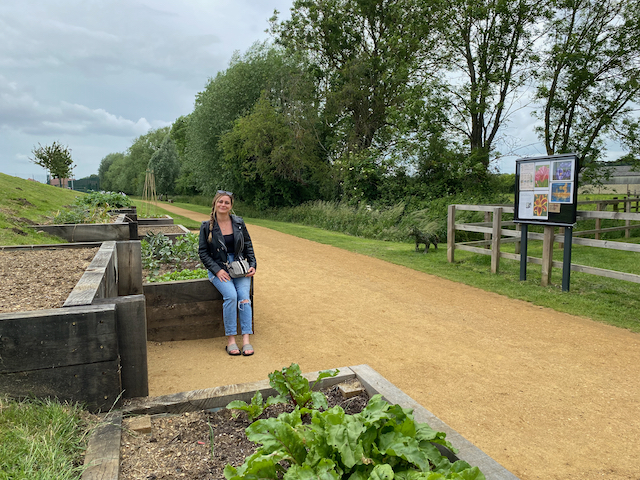

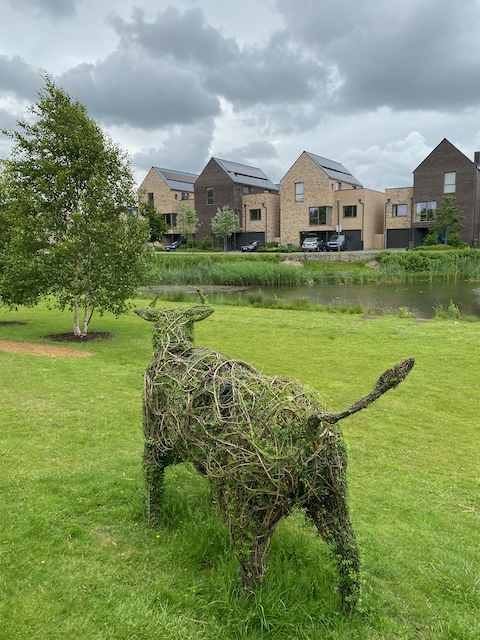
The NHS Healthy New Town programme aimed to explore how the development of new places could provide an opportunity to create healthier and connected communities with integrated and high-quality health services. The sites have explored the ‘how-to’ of healthy place-making. The Barton Healthy New Town Delivery Group has focused on community activation and collaboration with the existing communities.
A summary of some of health-promoting measures used at Barton Park are described below, as they relate to the scales of health impact and core principles of the THRIVES framework (4) using published materials about the project.
| Planetary health | Houses and public buildings are constructed to higher standards for energy efficiency than required through building regulations (Code Level 4 of the Code for Sustainable Homes and BREEAM ‘Very Good’ for non-residential). Buildings contain space for compost and recycling storage. Biodiversity is supported through greenspace, bat boxes and the wetland. |
| Ecosystem health | Cycling and walking is promoted with parks, paths and plenty of greenery. Three new trails – designed around active play and nature – will connect Barton Park and Barton. Cycle storage, bus routes, electric vehicle charging points and walkable streets aim to support active and low-carbon travel. Soil was re-used on-site. Rainwater harvesting and sustainable drainage approaches are adopted in the site design. A Construction Environmental Management Plan is used to monitor dust, noise and other impacts. |
| Local health | Provision of infrastructure and services is one of the main health and wellbeing achievements of this project. Barton Park includes a new primary school; community hub with activity space, sports facilities and a community pavilion; and improved and extended allotments for all Barton residents. Safety is integrated through Secure by Design principles such as defensible space, natural surveillance and active frontages. Allotments and support for Good Food Oxford initiative connect residents with locally grown food. The Barton Neighbourhood Centre also offers cooking classes and a community larder (initiated during the pandemic). Jobs are created through the construction of the development and new services on-site (e.g. the school). Housing provision includes 40% affordable homes. |
| Inclusion | The health and community hub in Barton Neighbourhood centre is co-designed and supported by the community and the voluntary sector and serves as a setting for communal activities such as a community larder, lending library, cooking classes and more. Adoption of Lifetime Homes Standard and Building for Life. |
| Equity | On-site amenities, such as the playground and sports pitches, are shared with residents of the existing community. Baseline health needs study helped identify how the new development could reduce health inequalities for existing residents. |
| Sustainability | See sections above. |
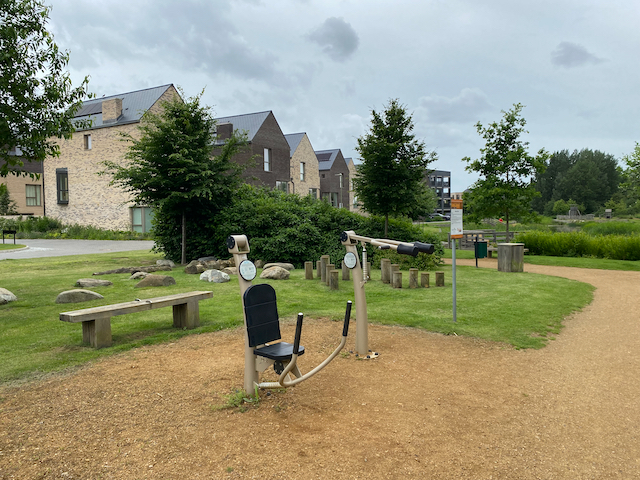
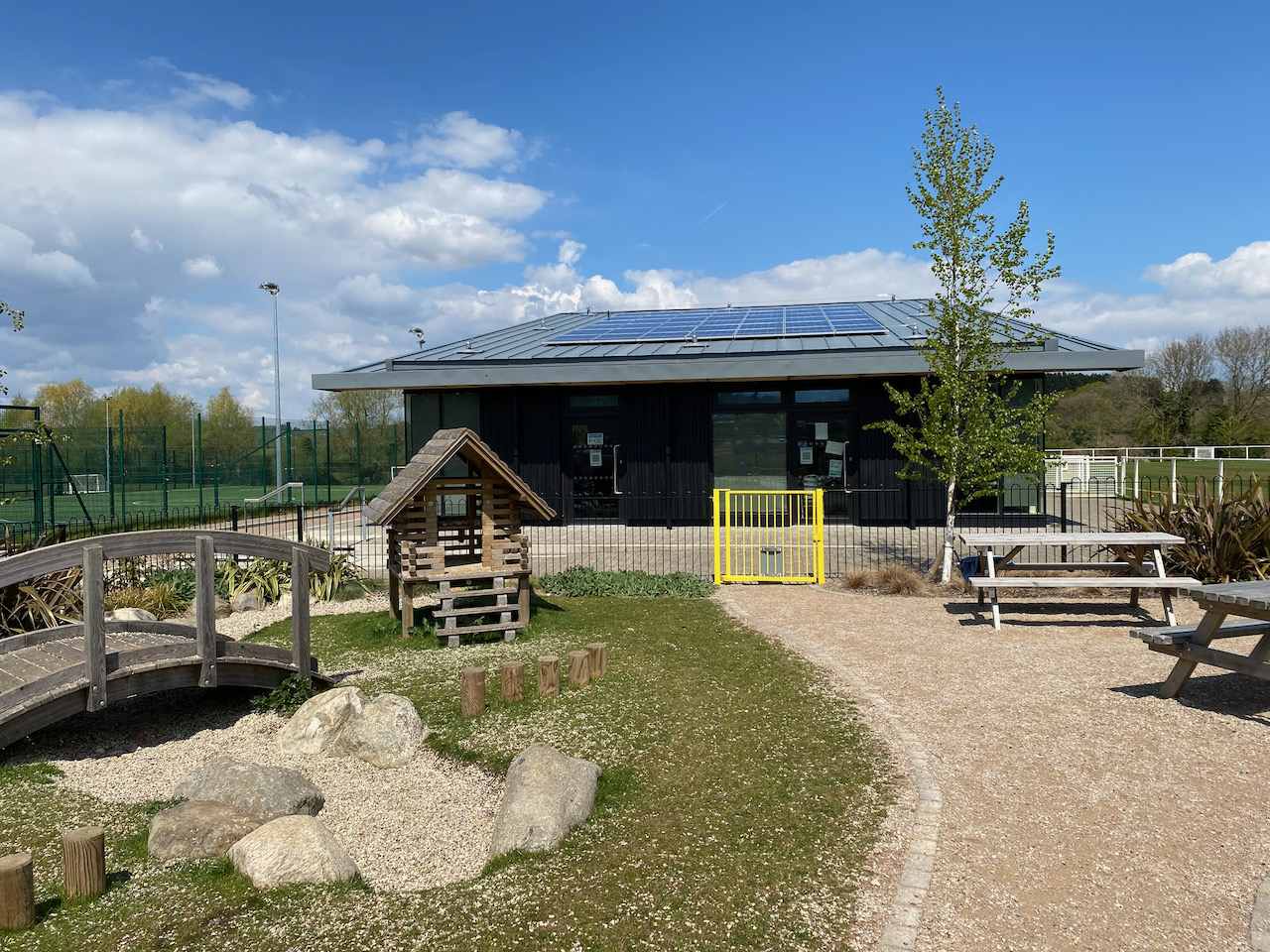

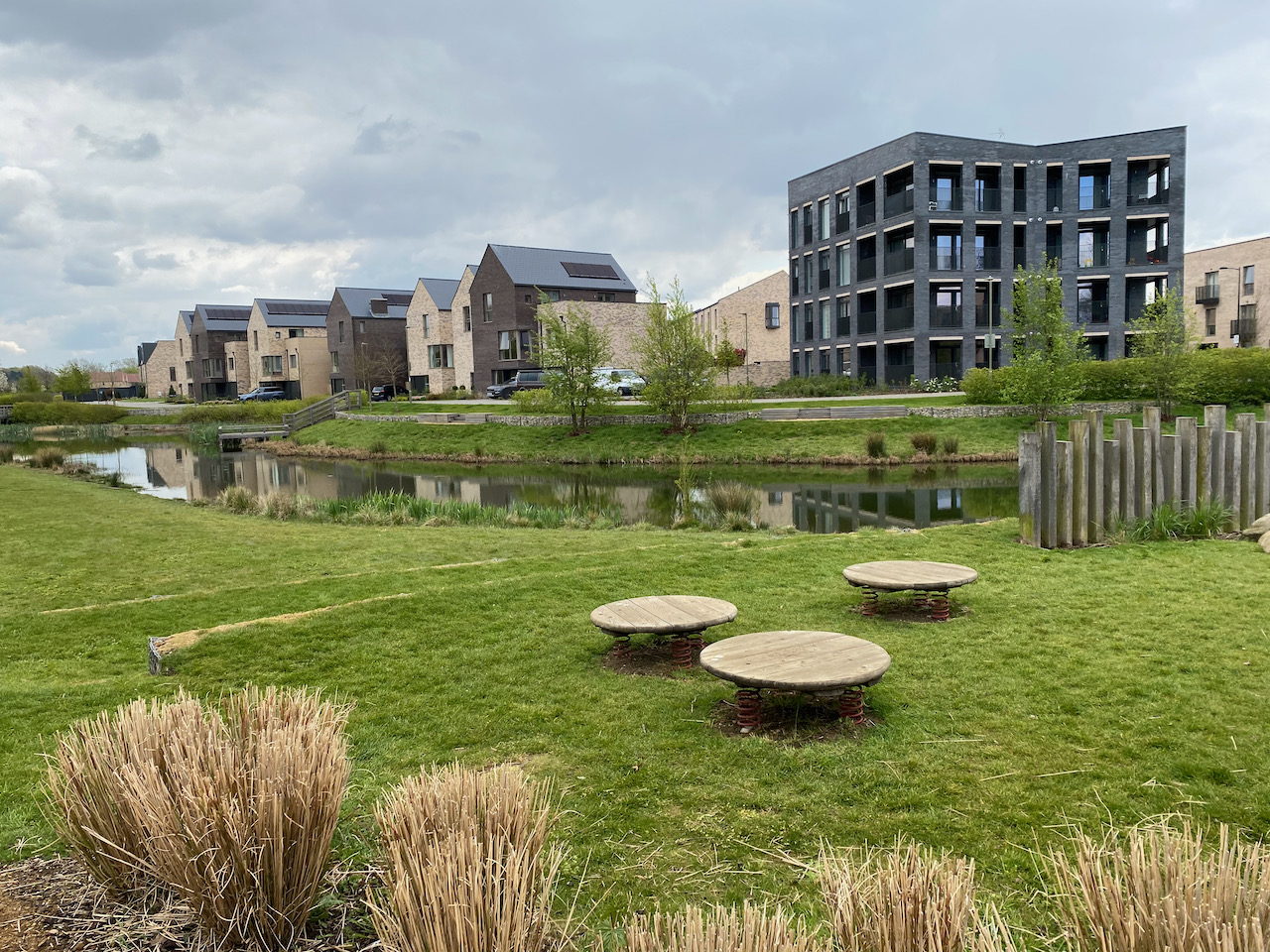
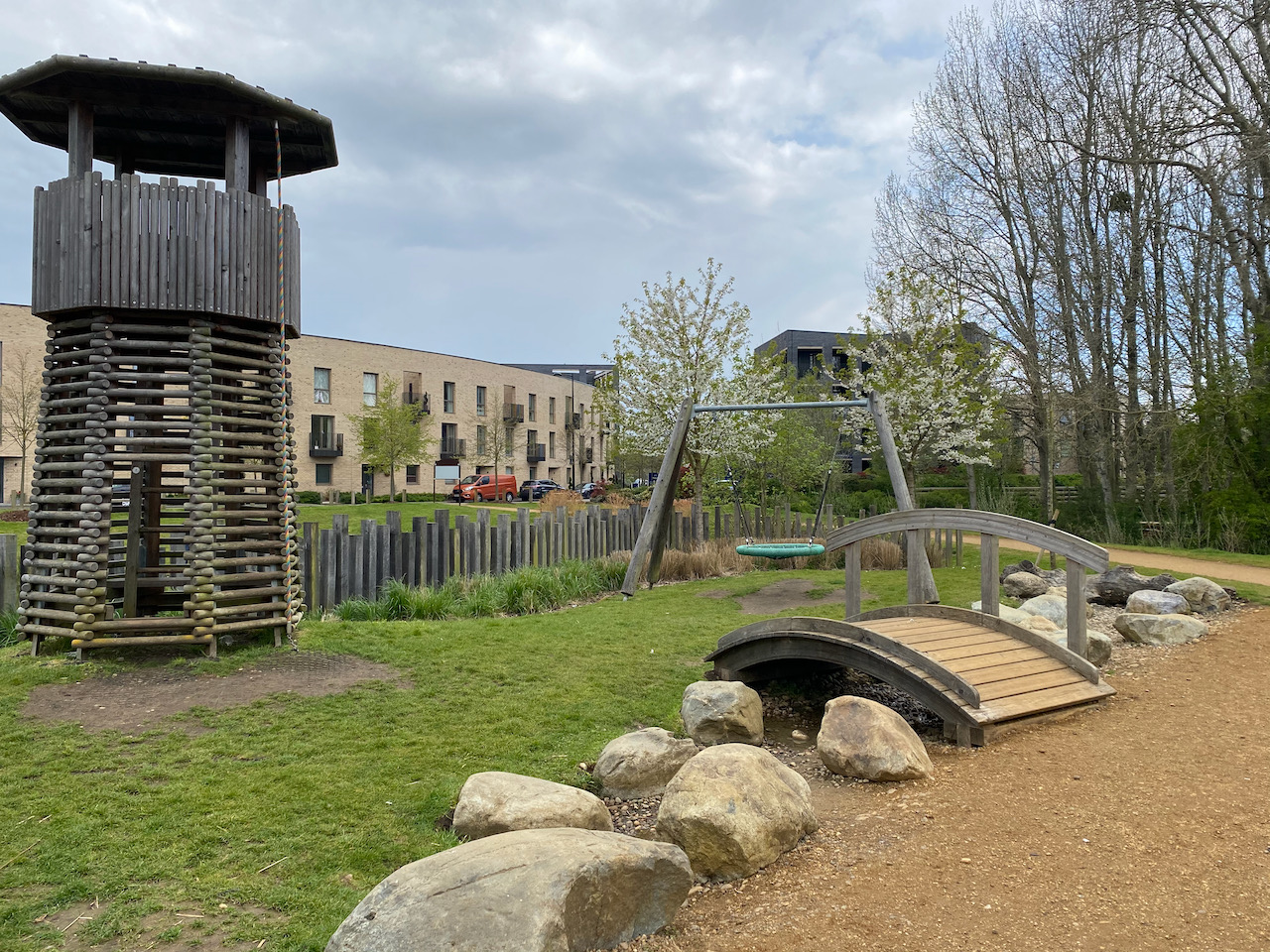
Achievements
At the time of writing, this project is still under construction. Preliminary evaluations of the process suggest that many residents speak of the project positively and that benefits are gradually emerging related to improved physical activity and social connection.
- Barton Park has had notable achievements in terms of promoting healthy eating, providing food for those in extreme need, population health management and integrated care, and providing support for the patients with complex needs through the initiative called ‘Team Around the Patient’ (TAP) (5).
- This project contributed to a change in planning policy with the City Council including a policy within the draft Oxford Local Plan 2036 stipulating that ‘for development proposals of more than 9 dwellings or 1000m2 the Council will require a health impact assessment to be submitted to include details of implementation and monitoring.(6)
- An evaluation of the social programme showed that participation by 322 patients over a two and a half year period cost an estimated £79,779. Users attested to both physical and social benefits. This programme resulted in reduced demand on primary and secondary care equivalent to savings of £79,426 over the same time period, making the initiative effectively cost neutral.(5)
- Appointment of a Community Health Development Officer, working for three years to support health equity and build the Barton Healthy New Town legacy.
Lessons learned
In the process of Barton Park development, momentum was built year by year. By the third year, a dynamic synthesis had shaped incorporating partnerships, data sharing, proactive population health management, and community involvement.
Best practice was shown through the project’s creation of a new baseline for health, wellbeing and health inequalities, based on data and primary research, to guide the project’s physical and service plans.(2) The health profile of Barton was undertaken using existing data, primary research and best practice population projections that could be replicated in Barton Park. This baseline information was used to inform the expanded health and community services offered at the Barton Neighbourhood Centre.
More information
- Pineo, H., 2022. Healthy Urbanism: Designing and Planning Equitable, Sustainable and Inclusive Places. Palgrave Macmillan, Singapore.
- Chang, M., 2018. Securing constructive collaboration and consensus for planning healthy developments: A report from the Developers and Wellbeing project. Town and Country Planning Association, London, UK.
- Iona O’Carroll’s biography.
- Pineo, H., 2020. Towards healthy urbanism: inclusive, equitable and sustainable (THRIVES) – an urban design and planning framework from theory to praxis. Cities Health 0, 1–19.
- Chanan, G., Morton, K., Harris, K., 2019. Barton Healthy New Town Concluding Evaluation: three key activities.
- Local Government Association, 2018. Oxford City Council and Grosvenor: developing and NHS-healthy new town.
